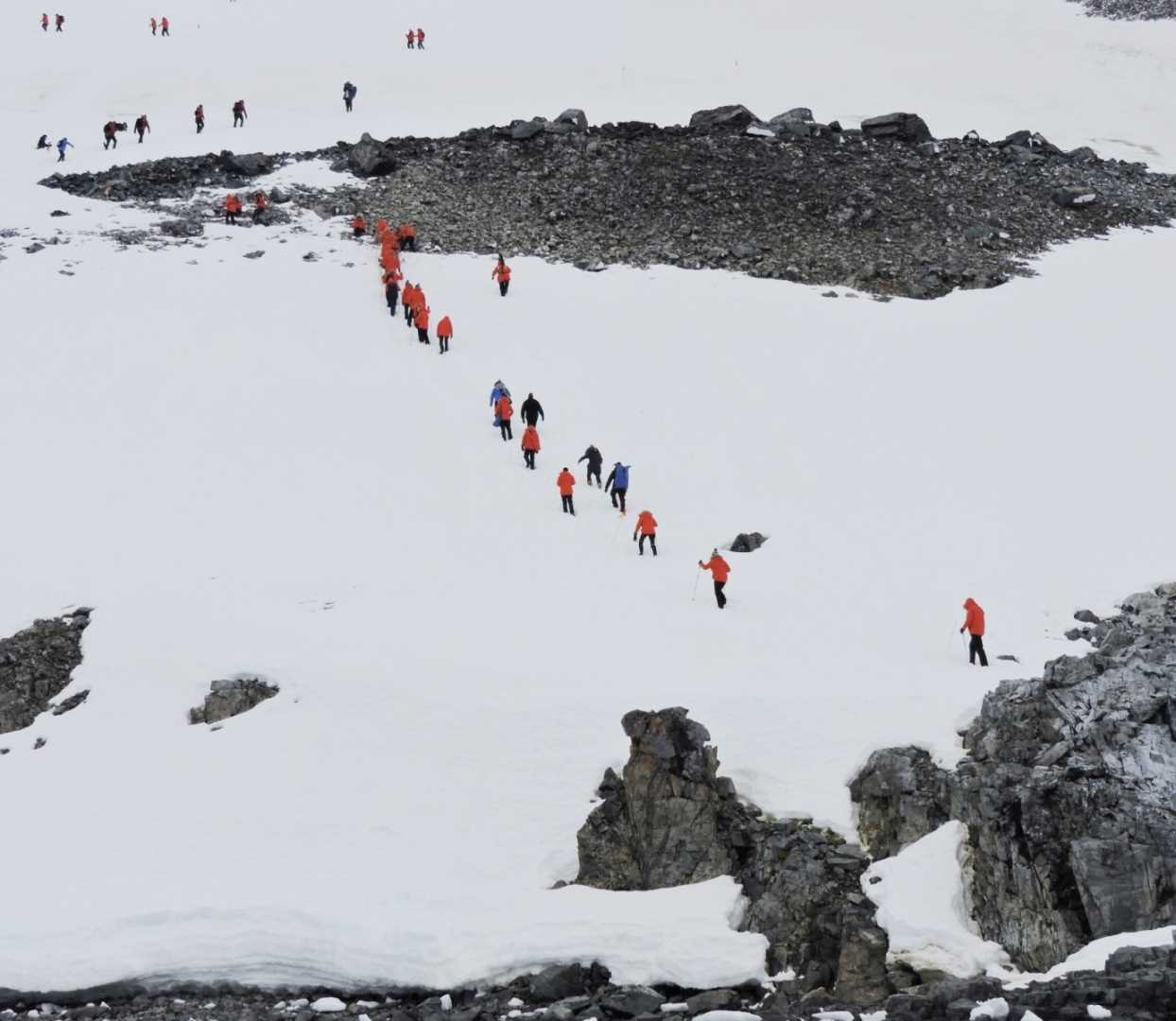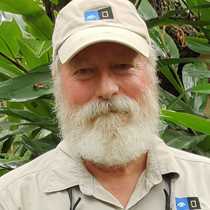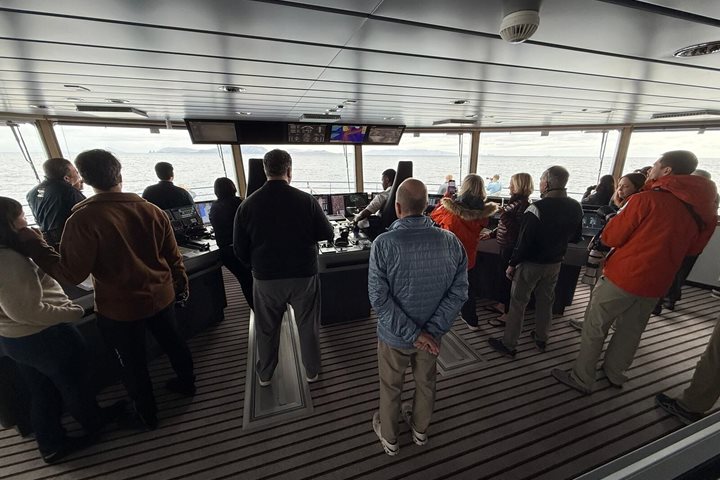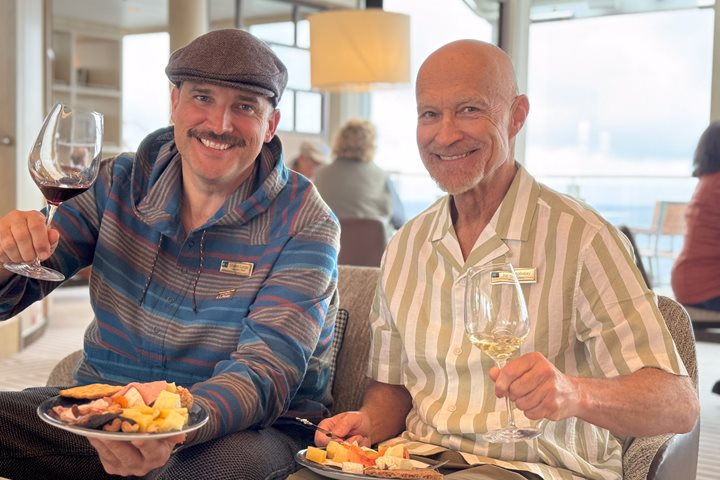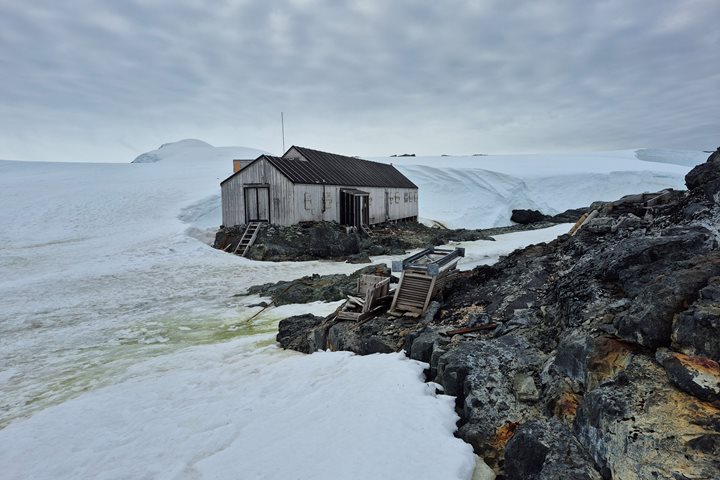We spent the morning in Orne Harbour, a bay locatOrne ed on the western side of the Antarctic Peninsula, facing the Gerlache Strait. This is truly spectacular scenery, as the area is surrounded by snow-covered mountains, vast snow fields, and numerous glaciers, not to mention icebergs floating in the water. After breakfast, we landed on the inside shoreline on the southern arm of the bay, which by the way was another continental landing. Once ashore, we made a steep, zig-zagging climb on snow up to a high vantage point on the saddle of Spigot Point. Those who made it all the way to the top enjoyed amazing views over the Errera Channel all the way across the Gerlache Strait to Anvers and Brabant Islands. Some people were surprised to find chinstrap penguin colonies high up on the saddle where we hiked to, and even farther up along the ridge towards the end of the promontory. The slopes on both sides of Spigot Point are mostly covered with permanent compacted snow and ice, so imagine how tough the climb must be for little penguins with their short legs. Fortunately, no one was tempted to try the treacherous hike all the way out to the high peak of Spigot Point itself, because that would have required serious training and special equipment.
We also offered Zodiac cruises within Orne Harbour, and everyone had time to partake in both excursions, i.e. climbing and cruising. The cruisers encountered icebergs, glaciers, and snow-covered slopes, some of which had impressive patches of red snow algae, also called watermelon snow. This species of alga, Chlamydomonas nivalis, even though it is red in color, is actually a kind of green alga that survives off snow surface meltwater and wind-blown dust consisting of rock minerals and bird guano. Some humpback whales were also sighted in the bay. In addition, several Antarctic fur seals decided to investigate our landing site, and one even climbed up to the top of a rocky outcrop to get a better view of what we were doing. These were the only Antarctic fur seals we saw during the entire voyage. One group of Zodiacs ended up in an exposed little side bay and encountered a mother and calf pair of humpback whales. Various other species, including gentoo penguins, Wilson’s storm-petrels, kelp gulls, brown skuas, southern giant petrels (including a white morph individual), Weddell and crabeater seals, and a few others were also observed.
When our ship sailed out of Orne Harbour, we encountered numerous humpback whales busily feeding on masses of krill (which we could clearly see on the ship’s depth sounder). As soon as the vessel stopped, three whales swam directly over to the bow of the ship and commenced feeding right in front of us. They were so close, we could smell their breaths! We could also look right down their blowholes. Some of the whales were in isolated groups and it almost seemed as though they purposely performed different demonstrations of feeding behavior for our education, as we witnessed lunge-feeding, bubble net-feeding, and simple diving and surfacing movements by individuals.
Eventually, we headed on through Dallman Bay, sighting more whales along the way. The ship completed the transit through Dallman Bay during dinner, and we found to our pleasant surprise quite nice sea conditions for the beginning of our trek back northward through the Drake Passage.

